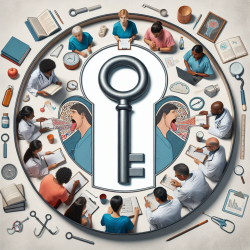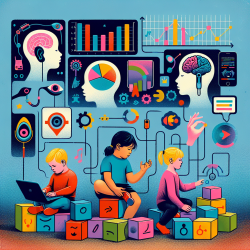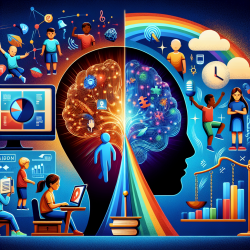Recognizing and Addressing Burnout and PTSD in Healthcare Professionals
The COVID-19 pandemic has placed unprecedented stress on healthcare professionals, leading to increased cases of burnout and posttraumatic stress disorder (PTSD). Understanding the differences between these conditions and implementing effective interventions is crucial for maintaining the mental health of healthcare workers. This blog draws insights from the research article titled "Burnout, Posttraumatic Stress Disorder, or Both – Listen Carefully!" to help practitioners improve their skills and encourage further research.
Understanding Burnout
Burnout is characterized by three primary dimensions:
- Feelings of energy depletion or exhaustion
- Increased mental distance from one's job or feelings of negativism or cynicism
- A sense of ineffectiveness and lack of accomplishment
These dimensions can be formally evaluated using the Maslach Burnout Inventory. Burnout is not classified as a disease but as a syndrome resulting from chronic workplace stress that has not been successfully managed. The COVID-19 pandemic has exacerbated these stressors, making it essential for healthcare professionals to develop personal coping strategies and seek supportive interventions.
Recognizing PTSD
Unlike burnout, PTSD is recognized in the Diagnostic and Statistical Manual of Mental Disorders, Fifth Edition (DSM-5). PTSD is triggered by exposure to actual or threatened death, serious injury, or sexual violation. The exposure must result from one or more scenarios:
- Directly experiencing the traumatic event
- Personally witnessing the traumatic event
- Learning that the traumatic event occurred to a close family member or close friend
- Experiencing first-hand repeated or extreme exposure to aversive details of the trauma
Behavioral symptoms of PTSD include re-experiencing the traumatic event, avoidance, negative moods or cognitions, and arousal. Interventions for PTSD primarily involve psychotherapy, including cognitive therapy, exposure therapy, and eye movement desensitization and reprocessing (EMDR), with or without medications.
Interventions and Support
To address burnout, healthcare professionals should focus on developing personal methods to achieve control in their work environment and invest in activities that bring relief from their responsibilities. Examples include:
- Engaging in hobbies or social activities
- Maintaining a regular exercise routine
- Seeking support from friends, family, and colleagues
For those experiencing PTSD, early intervention is crucial. Healthcare professionals should not hesitate to seek professional help and support from their community. Leadership in healthcare organizations should also play an active role in recognizing and addressing mental health issues among their staff. This includes:
- Providing access to mental health resources
- Encouraging open communication about mental health
- Implementing supportive workplace policies
Encouraging Further Research
While the current research provides valuable insights, there is a need for ongoing studies to better understand the long-term effects of the COVID-19 pandemic on healthcare professionals' mental health. Practitioners are encouraged to stay informed about the latest research and contribute to the growing body of knowledge in this field.
To read the original research paper, please follow this link: Burnout, Posttraumatic Stress Disorder, or Both – Listen Carefully!










